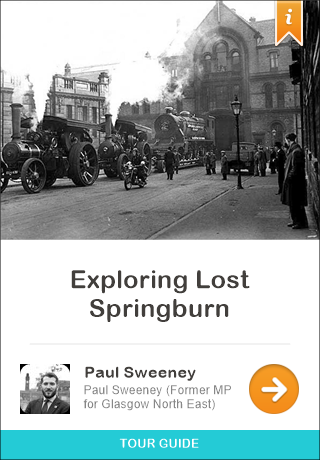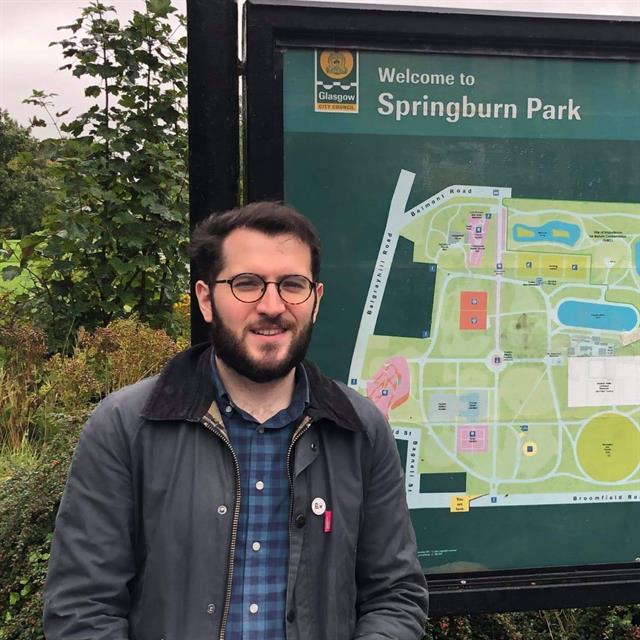Exploring Lost Springburn
and use it offline.Interactive multimedia guided tours on the go. Learn more


Start the tour from the Broomfield Road Gate at Springburn Park
8 min
Looking at the surviving Doulton Column
4 min
One of the original houses predating the park
4 min
Home of the Reid Family
2 min
Built as a Poor Law Hospital in 1904
4 min
The boating pond was used for model yachts and small rowing boats
2 min
As the 20th century progressed, new sports facilities were introduced.
2 min
James Reid, locomotive industrialist and benefactor to Springburn
3 min
The architectural highlight of the park, it was constructed in 1900.
8 min
The last surviving example of the original park railings
1 min
The original sandstone quarry, now a decorative rock garden and lily pond
2 min
The changes to Balgrayhill Road from the 1960s were part of Glasgow's housing boom.
2 min
Charles Rennie Mackintosh's first independent commission
2 min
One of the original country houses that pre-dates the urbanisation of Springburn
2 min
The old junction of Balgrayhill and Springburn Road, now entirely obliterated.
4 min
The much changed heart of Springburn, the Balgray Recreation Ground and old Baths
3 min
Exploring more of the lost buildings of central Springburn
6 min
The old heart of Springburn
4 min
One of the original Carnegie Libraries
4 min
Fine administration building designed by James Miller for NB Loco
6 min
The ill-fated Springburn Public Halls 1902-2012
7 min
One of Glasgow's most iconic cemeteries, opened in 1840
4 min
The last of Springburn's iconic Railway Works
5 minFrom winter gardens to locomotive works, this tour will explore the architectural and industrial legacy of a lost Springburn, that saw over 85% of its buildings demolished during the city's final 'Comprehensive Development' project in the 1970s and 1980s. From Springburn Park, the highest point in Glasgow and last Victorian park to be laid out in Glasgow, the tour will explore the role of the steam locomotive industry in rapidly building a world-leading industrial metropolis from a rural backwater at the start of the 19th century. Only the fragments of a once dense district of tenements, villas, pubs, schools, churches, railway workshops, co-operative society shops and public halls survive intact from the end of the 1960s, but those that do survive remain some of the finest municipal and industrial buildings in the city.
 Working…
Working…